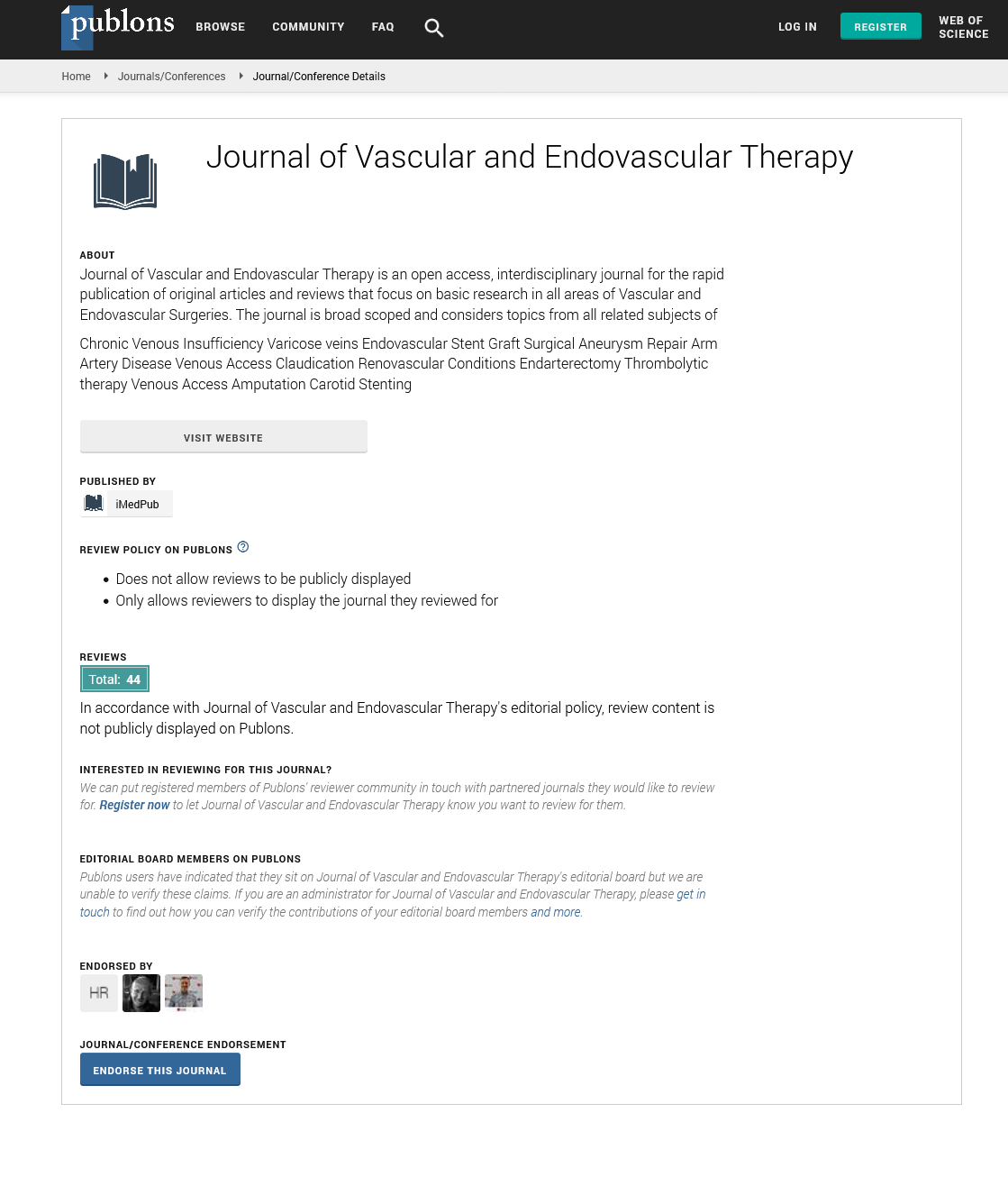Abstract
Comparison of Percutaneous Peripheral Intervention Performed in a Dedicated Hybrid Operating Theatre vs. Cardiac Catheterization Laboratory
Objective: Percutaneous Peripheral Intervention (PPI) has emerged as the treatment-of-choice for patients with symptomatic peripheral vascular occlusive disease. The procedure may be performed in a variety of clinical settings including a standard operating theatre, interventional radiology suite, hybrid operating theatre (hybrid room), or cardiac catheterization laboratory (cath lab). The purpose of this retrospective clinical study was to test the hypothesis that PPI could be performed safely by vascular surgery specialists in a cath lab at a reduced cost as compared to a hybrid theatre.
Methods: Consecutive PPI procedures performed by three dedicated vascular surgeons were retrospectively analyzed. The choice of venue was primarily related to facility availability although patients with high medical risk were preferentially treated in the hybrid suite. Demographic characteristics, peri-procedural outcomes and cost were tabulated and compared.
Results: A total of 146 PPI procedures performed either in the hybrid room (n=97) or the cath lab (n=49) was reviewed. Patient indications and comorbidities including coronary artery disease, hypertension, dialysis-dependence, critical limb ischemia, in-patient status, diagnostic vs. therapeutic procedure, operative time and anatomic level of intervention were similar for the two groups. Patients undergoing PPI in the hybrid room had a higher incidence of prior peripheral revascularization (46% vs. 29%; p=0.049), were more likely to require general anesthesia (18% vs. 0%, p<0.05), were more likely to require open femoral access (9.3% vs. 0%; p=0.03), were accessed with larger sheaths (61% vs. 35%; p<0.01) and were imaged with less contrast dye (73 ± 38 mL vs. 117 ± 57 mL; p<0.01). Major complications including retroperitoneal hematoma (0% vs. 2%; p=0.34), acute limb ischemia (1% vs. 0%; p=1) and/or acute kidney injury (1% vs. 0%; p=1) were rare in both groups. Patients treated in the cath lab were more likely to experience transient hypotension (10% vs. 22%; p=0.08) and/or transient postprocedure creatinine elevation (2.0 ± 2.1 vs. 3.0 ± 3.0; p=0.05). Surprisingly, both hospital charges and hospital costs were significantly less for patients treated in the hybrid room as compared to the cath lab (total charges $18714 ± 9633 vs. $26902 ± 19753; p<0.01, total direct and indirect costs $7174 ± 3847 vs. $9659 ± 7064; p=0.01). Medical supplies indirect cost and room services total direct and indirect costs were also higher in the cath lab (medical supplies indirect $336 ± 557 vs. $836 ± 1893; p=0.02; room services $3183 ± 2068 vs. $5169 ± 3314; p<0.01).
Conclusions: PPI can be safely performed in either a hybrid surgical suite or cardiac catheterization laboratory although treatment in a hybrid suite utilizes less hospital resources.
Author(s):
Rym El Khoury, Andrew P Russeau, Firas Dabbous, Moustafa N Sabri, Chad E Jacobs, John V White, Lewis B Schwartz
Abstract | Full-Text | PDF
Share this

Google scholar citation report
Citations : 177
Journal of Vascular and Endovascular Therapy received 177 citations as per google scholar report
Journal of Vascular and Endovascular Therapy peer review process verified at publons
Abstracted/Indexed in
- Google Scholar
- Open J Gate
- Publons
- Geneva Foundation for Medical Education and Research
- Secret Search Engine Labs
Open Access Journals
- Aquaculture & Veterinary Science
- Chemistry & Chemical Sciences
- Clinical Sciences
- Engineering
- General Science
- Genetics & Molecular Biology
- Health Care & Nursing
- Immunology & Microbiology
- Materials Science
- Mathematics & Physics
- Medical Sciences
- Neurology & Psychiatry
- Oncology & Cancer Science
- Pharmaceutical Sciences


